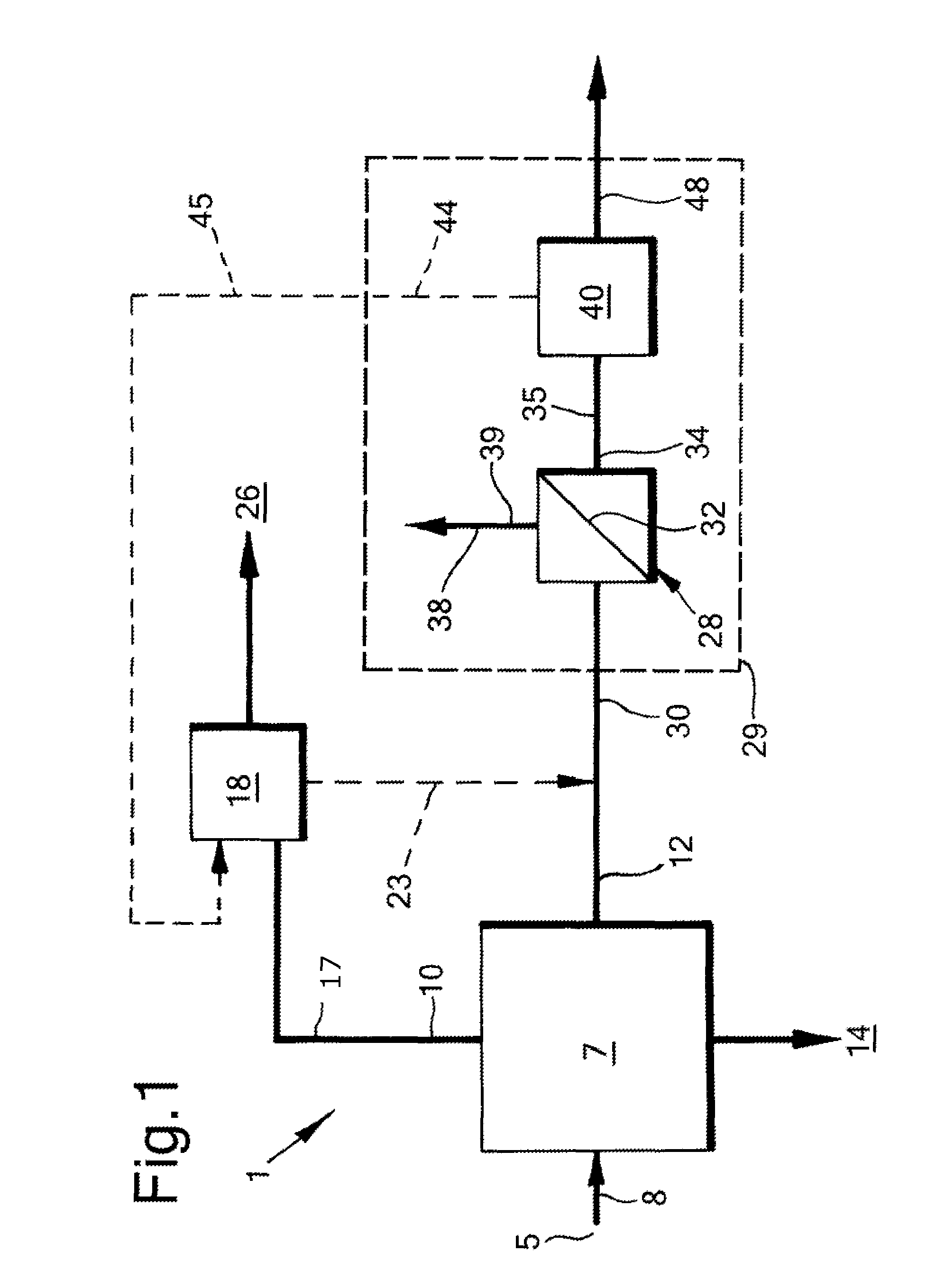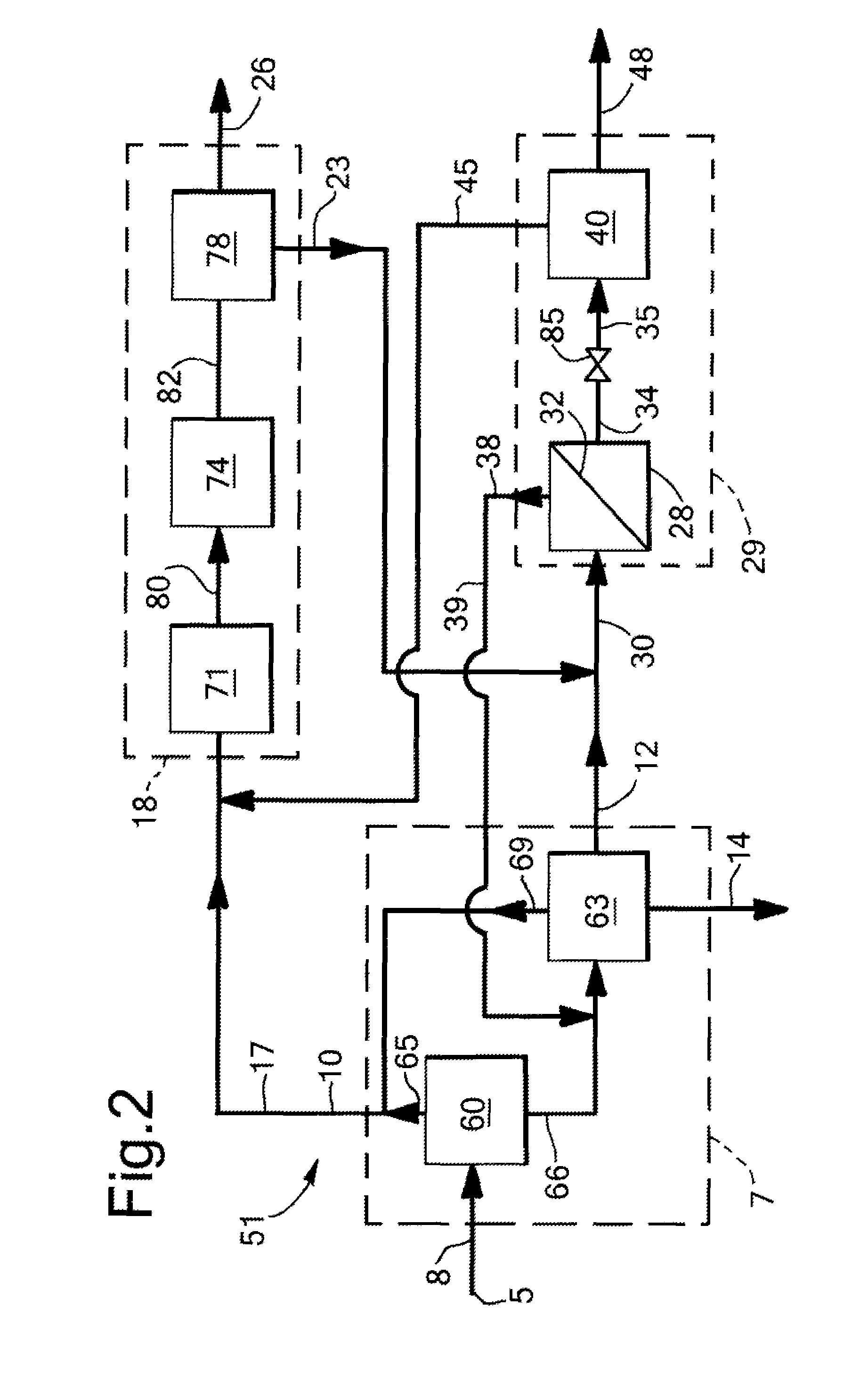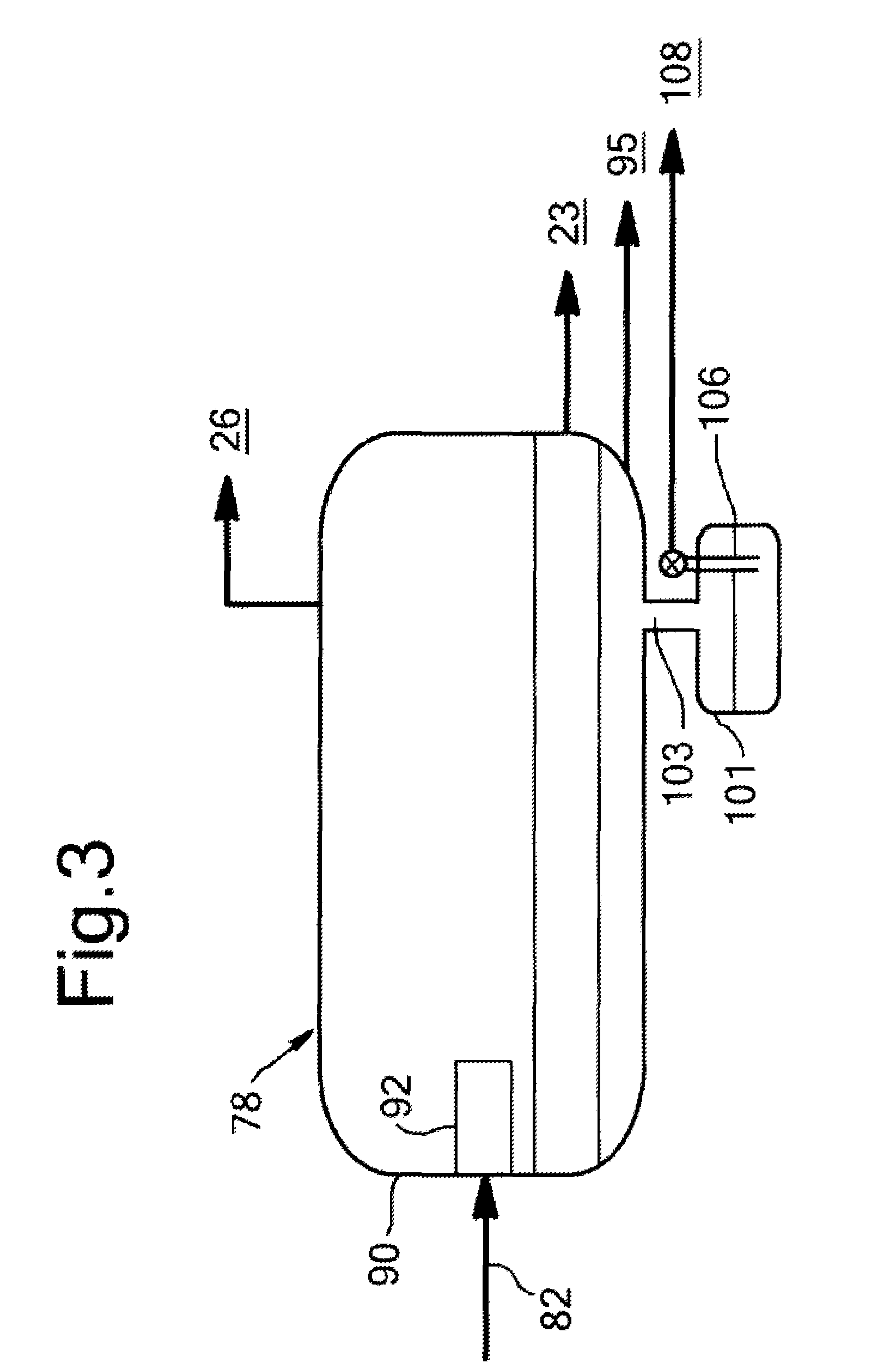Method for reducing the mercury content of natural gas condensate and natural gas processing plant
a technology of natural gas condensate and natural gas processing plant, which is applied in the direction of hydrocarbon oil dewatering/demulsification, tar working-up by chemical refining, and membranes. it can solve the problems of mercury components damage metal components, process cannot be used efficiently for liquid feedstock, and high price penalty for high hg concentrations in traded products
- Summary
- Abstract
- Description
- Claims
- Application Information
AI Technical Summary
Benefits of technology
Problems solved by technology
Method used
Image
Examples
examples
[0078]Membrane separation tests were carried out for three liquid condensates from different sources (sample designations S, N, and D). The membrane separation unit that was used in these tests was built from glass in order to prevent mercury adsorption on metal, which could otherwise have disturbed the mass balance in the tests. It will be understood that in general a suitable membrane separation unit can contain metal parts. The membrane separation unit was provided with 9.6·10−4 m2 of a PDMS / PAN membrane as obtained from GKSS Forschungszentrum GmbH (a research institute having its principal office in Geesthacht, Germany), and commercially available from GMT Membrantechnik GmbH (a company having its principle office in Rheinfelden, Germany). The membrane comprised a top layer of cross-linked PolyDiMethylSiloxane (PDMS) and a supporting layer of a PolyAcryloNitrile (PAN).
[0079]In each of the tests, condensate was fed for several hours into the dead-end membrane cell. The flux, pres...
PUM
| Property | Measurement | Unit |
|---|---|---|
| Molecular Weight Cut Off | aaaaa | aaaaa |
| pore size | aaaaa | aaaaa |
| pore size | aaaaa | aaaaa |
Abstract
Description
Claims
Application Information
 Login to View More
Login to View More - R&D
- Intellectual Property
- Life Sciences
- Materials
- Tech Scout
- Unparalleled Data Quality
- Higher Quality Content
- 60% Fewer Hallucinations
Browse by: Latest US Patents, China's latest patents, Technical Efficacy Thesaurus, Application Domain, Technology Topic, Popular Technical Reports.
© 2025 PatSnap. All rights reserved.Legal|Privacy policy|Modern Slavery Act Transparency Statement|Sitemap|About US| Contact US: help@patsnap.com



